The Beginner’s Guide: Christopher Nolan, Director
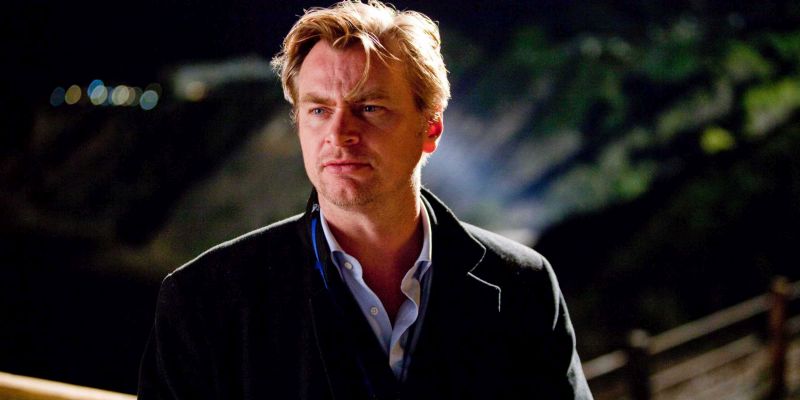
Raul Marin is a contributor for Film Inquiry. He is…
One of the year’s most-anticipated films is Interstellar, and it is directed by acclaimed director Christopher Nolan. It will be the first film he does exploring space. He began his resume with a short film called Doodlebug, and since then, he has taken Hollywood by storm directing nine films that include Following, Memento, Insomnia, The Prestige, Inception, and the The Dark Knight trilogy.
When you see the name Christopher Nolan on the big screen, there is an expectation of greatness of his films. He has a very particular style that he brings to the marketing and making of his films. The secrecy behind the plot and story before the films are released, a group of actors that he consistently works with, and one-word titles. These are only a few reasons why excitement revolves around the films he makes. He has honed his directing skills since the release of Following, and his resume demonstrates that. Lets take a look at his work from the beginning up to now.
Following: A Dedicated Beginning
In 1998, Nolan released his directorial debut film, Following, that centers on a young writer who follows random people to have some material to write. Everything changes when he develops a relationship with a thief. That is when things do not appear to be what they seem. What was once a casual routine, becomes a very risky and dangerous practice. Using a 16mm black and white film, Following started Nolan‘s exploration of the film noir genre, and it is done with a broken chronology that he would later use in Memento as well.
It is a broken chronology because we see the beginning, middle, and end of the story at the same time. In an interview with The Onion A.V. Club, Nolan shared his perspective about this filmmaking style: “To me, any kind of filmmaking that’s reactive is not going to be as good as something more inventive and original.” A fitting quote to describe the character of Bill (Jeremy Theobald). We have seen the theme of writer’s block in films before, but it is difficult to think of a character in another film that can compare to Bill in this one. It is interesting to see how Nolan wrote the story because it reflects his thoughts on how we come across news stories in real life.
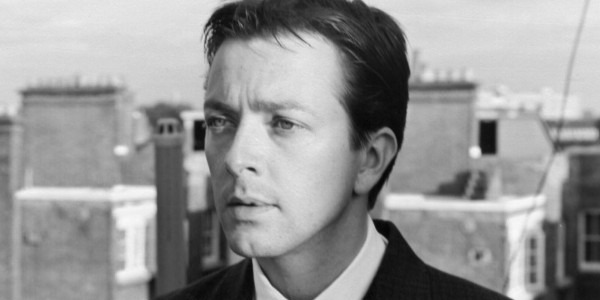
In the same interview mentioned earlier, Nolan shared that he wanted to do this film in a three-dimensional way. He said we may read an article about a story one day, but next week, another article may give us a different perspective of that story. From the beginning until the end, the perspective of Bill will definitely change because he is not the same man. How would people respond if they knew this happens on a daily basis? It really takes gravitas to show a character with such a dangerous lifestyle, but who becomes stronger from his involvement in it. Joining Theobald was a very small supporting cast, but this may have been done purposely to help us follow the story more easily. As the first film in Nolan‘s resume, you will begin to see his strong attention to detail in the camera work and screenplay.
Memento: A Mind-Bending Noir Thriller
The next film that Nolan directed is Memento in 2000. In terms of its style, it is a continuation of the crime and mystery and noir genres that he used in Following. Based on the short story written by his brother Jonathan Nolan, it is a thriller that follows the investigative work of Leonard (Guy Pearce) who is searching for the man that he believes killed his wife.
This film continues the pattern of a broken chronology story, but instead of being told from three different angles at the same time, it starts with the end and ends with the beginning. Leonard’s investigation is a heavily-challenged one because he suffers from short-term memory loss. He is unable to make new memories, so the only way he can find the killer is by reading the tattoos on his body and the notes that he writes. There are two narratives going on, and as you go from one to the other, the film changes from color to black and white. Just like in Following, it is a well written screenplay, so you get attached to Leonard’s character from the start. He is not a hero, but you want to see him succeed.
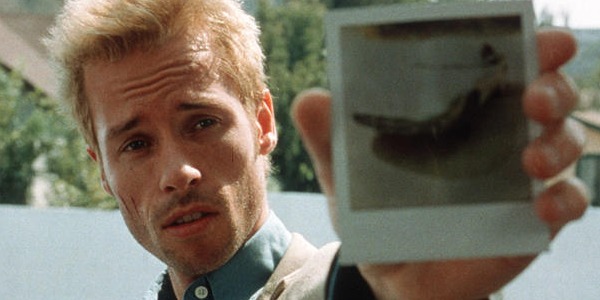
In the interview mentioned previously, Nolan shared why the film was done this way: “Well, you don’t tell them what’s just happened, you tell them what’s going to happen, and tell the story backwards, that way you remove the information from the audience that’s not available to the character, and that helps you get into his condition.” It is interesting to note that Brad Pitt passed on the film, according to Nolan’s interview with Deadline, but this created a lot of publicity for the film and Pearce eventually landed the role of Leonard. He is joined by a supporting cast that includes Carrie-Anne Moss and Joe Pantoliano who delivered solid performances. The writing is another strength, which earned the film an Academy Award nomination for Best Writing, Screenplay Written Directly for the Screen.
Insomnia: A Fear Of The Unknown Thriller
Nolan‘s third film is another one that explores the noir genre and it is Insomnia. Released in 2002, it follows the path of Detective Will Dormer (Al Pacino), who is sent to a town in Alaska, where the sun never sets, with his partner to investigate the murder of a teenage girl by her suspected killer, Walter Finch (Robin Williams). Based on the 1997 Norwegian crime thriller of the same name, this film is more focused on the thought process of Dormer, and how his insomnia affects his actions and decision-making; there is a lot more on the line for him than just this case.
In the interview with The Onion A.V. Club mentioned previously, Nolan shared that the beauty of doing noir films is that it is a very subjective genre. It is a genre that features an uncertainty of your surroundings, or a fear of the unknown. For him, the best way to demonstrate this on film is by walking through a maze, as opposed to looking at it from above. As you go from Memento to Insomnia, there is a strong connection between the thought process of the protagonists. Both Leonard and Dormer are looking for answers to solve a crime. The difference is that in this film, Dormer’s story is told in a much more linear fashion. The circumstances of the characters are different, and Dormer is faced with tremendous exhaustion, guilt, and stress that he cannot control. This was a fascinating narrative for Nolan because it touches on the difficult relationship between motivation and action.

Another point of comparison between the two films is the use of moral paradox. In Following, Leonard’s actions are influenced by his desire for revenge on his wife’s killer. Dormer’s actions are all based on a number of previous experiences that have changed his approach to his work. So for both characters, it is difficult to make the right decision when they may face consequences for those decisions. That is what Nolan calls the moral paradox of a character. This leaves a lingering thought in our mind over whether Dormer is a hero or a villain because of the actions that he does or doesn’t take.
Over the course of these last three films, we have seen Nolan use characters that must cope with the consequences of their actions. In his interview with The Onion A.V. Club mentioned previously, he shares that there is this an immediate connection to characters like Leonard and Dormer because they may have flaws, but they have a heart. Ironically, their morals will always be questioned because the crimes determine what they do. Like the films before it, this is another one that you will enjoy revisiting.
Batman Begins: A Revival Of The Batman Franchise
Recently, Batman celebrated his 75th anniversary in DC Comics. No doubt he is one of the most popular and iconic comic book heroes that has had a very successful transition from the comics to the big screen. It has been seen throughout social media that fans have criticized Joel Schumacher for the comedic approach and poor stories in his films in 1995 and 1997. The Batman franchise was in need of a revival, and according to an article by The Guardian, it took Christopher Nolan 15 minutes to get Warner Bros. to green light his interest in directing the next film in his resume, Batman Begins in 2005. Little did he know that It would become the start of a very successful and lucrative trilogy.
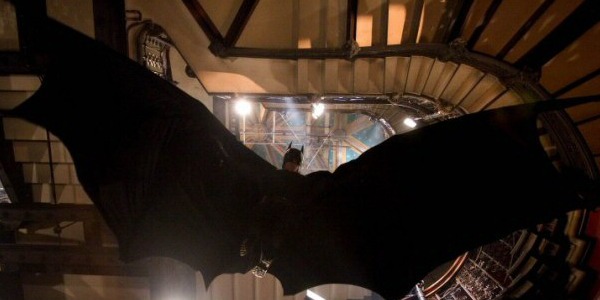
In The Guardian article mentioned previously, Nolan shared that his approach to bringing him back on screen was to focus on his emotional appeal: “The testing process on this kind of character, it’s not about acting ability or chemistry or any of those things. It’s about being able to project this extraordinary iconography from the inside.” Batman is the alter-ego of Bruce Wayne, who has been tormented all his life by the death of his parents when he was a young boy. That is the reason why he chooses to be Gotham City’s protector; to fight the injustices in society that he couldn’t do as a young Bruce. Before he can do that, he must overcome his fears. Like no other film in the franchise before this one, Nolan delivers a detailed transition of a man who was hungry for vengeance, to a man who chooses to mask his anger with the bat suit.
When it comes to origin stories for comic films, this one is arguably at the top. From the development of Bruce’s martial arts skills with the League of Shadows under the guidance of Ducard (Liam Neeson), who goes from mentor to enemy, to accepting his role of fighting against crime for Gotham City, it is a brilliant display of what it took physically and emotionally for Bruce to become a dark knight. Another strong point to watch for is Nolan‘s ability to blend a group of villains with the story. In other words, you never see the style take over the substance of the story. This is the film that re-establishes the appeal of the Batman franchise, and it also features one of the best quotes in the trilogy: “Why do we fall, Bruce? So we can learn to pick ourselves up.”
The Prestige: A Stellar Magic Show
Following the success of Batman Begins, Nolan would make a return to the noir genre and direct another mystery drama, The Prestige. Based on the novel by Christopher Priest, it’s about two friends who become rival magicians after the death of Robert Angier’s (Hugh Jackman) wife during an act. He blames Alfred Borden (Christian Bale) for it, and from then on, they will stop at nothing to sabotage the magic tricks of the other. Between them, Angier is the much more gracious presenter, while Borden is the talented illusionist. Their fierce competition will inspire you to keep watching this film several times again.
This is the first film in Nolan‘s resume that is set in a time period of the past, the Victoria era. In an interview with Female First, we learn that what piqued Nolan‘s interest about doing a film about magicians is that they have very similar traits with filmmakers. They both require an active involvement from the audience, and their suspension of disbelief. The audience knows what’s coming, but to enjoy the spectacle more, they need to act as though they don’t. The presentation of the illusion is fundamental. That was the driving force behind the relentless pursuit of Angier and Borden to outperform each other. Interestingly, this is also the first film in which Nolan did not have a clear hero or villain. In the interview mentioned previously, he said it was liberating in terms of the story. The challenge with that is to keep the audience interested in the characters. In the end, it was no problem thanks to very strong performances form both actors.
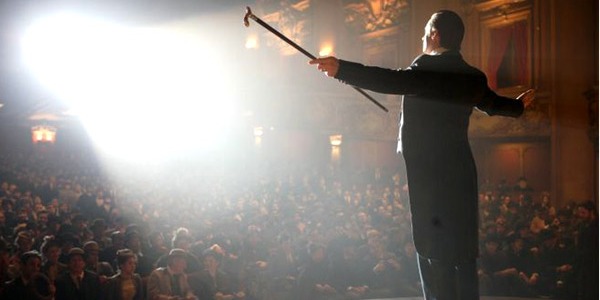
The film also includes Michael Caine as Cutter, who is the designer of the illusions that the magicians put on stage. His character is really the moral and emotional center of the film. His experience and his insights have tremendous influence over the acts that Angier performs.
What is interesting about this film compared to the others on Nolan‘s resume is that it may be the most subjective of them all. In his interview with Female First, he stated that for him, it was about making a film that would depend on the involvement of the audience and how they see the film. If you enjoy watching a great magic trick or an amazing spectacle, this film will deliver the goods. It is another great example of the success that Nolan has had doing films in the noir genre; while they may share common traits such as crime, drama, and mystery, this is a film that surprises you like a magician with a good magic trick.
The Dark Knight: An Extraordinary Sequel
Following a return to the noir genre in The Prestige, the next film in Nolan‘s resume would be the impressive and dark sequel to Batman Begins, The Dark Knight in 2008. It has always been said that it is very difficult for sequels to surpass the greatness of the films that they follow. In this case, this film is a big exception to that view. For starters, it reignites the classic battle between Batman and his arch-nemesis, the Joker (Heath Ledger); who received a posthumous Oscar for his chaotic and diabolical portrayal of the purple-suited villain.
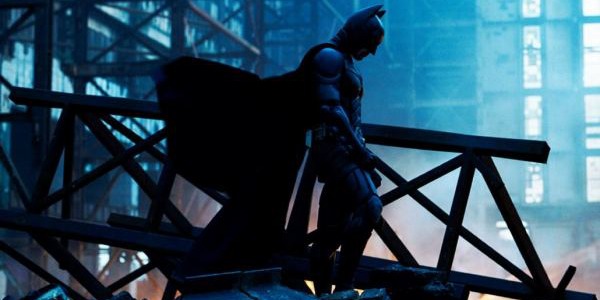
It is interesting to note that doing this sequel was not in Nolan‘s immediate plans as he shares here in an interview with Empire: “The way in which Batman Begins ended was intended not as much as sequel bait, but to create a level of excitement at the end of the movie and imagining how things might continue in this film.” Something that sets this film apart from Batman Begins are the scenes in daylight. They expose Gotham City’s vulnerability to the Joker’s plans of ruling the city with complete chaos and anarchy because Batman’s domain is at night. Joker has no rules or agendas, and that is what makes him even more dangerous because neither Batman nor anyone knows what to expect.
One of the most memorable scenes in the film is in the interrogation room, where Batman and Joker meet for the first time. There is a lot to learn from this scene. Joker may not be a stronger, physical force than Batman, but he shows that he does not fear him. He really pushes Batman to an emotional limit, and when his anger gets to that level, it is when he is most vulnerable because there are things that he won’t do. Nolan shares in the interview that he wants to put an end to his role as Gotham City’s protector, but the pressure of doing what’s right is even stronger. This is where Harvy Dent (Aaron Eckhart) plays a very emotional role in this film. He is the white knight that Gotham needs, but his story is also tragic. This is truly one of the great sequels ever done, and it will leave you hungry for more.
Inception: Dream Or Reality
In 2010, Nolan released his next mystery-themed film, Inception, which is arguably his most ambitious and visionary work. Dom Cobb (Leonardo DiCaprio) is a master thief, using dream-sharing technology to extract corporate secrets from the subconscious in a dream state. Now, he faces his toughest assignment, where he must plant an idea as opposed to extracting one. If he succeeds, it will change his life forever. In an interview with Wired, Nolan revealed that his intention was not to make this a heist film, though. “I wanted to deal with the world of dreams, and I realized that I really had to offer the audience a more emotional narrative, something that represents the emotional world of someone’s mind.”
In addition to the heist theme, Nolan makes a blend of genres here, including the noir genre, and a trace of the spy genre. This blending of themes is orchestrated by the fact that the film inadvertently shares the process behind filmmaking. In order to complete his difficult task, Cobb must assemble a team, where everyone has a vital role, similar to how it takes a team effort to make a film. While this was not Nolan‘s direct intention, which he states in the interview mentioned previously, it’s clearly seen through the display of the creative process of planting an idea. The film is an emotional narrative that builds a strong connection between what the team is doing for Fischer (Cillian Murphy), and what Nolan is doing for the audience. Using symbols to give ideas, which have meanings that can change later on.

Perhaps the most interesting aspect of this film in the blurred line between the dream world and reality of these characters. For Nolan, this was necessary to make the ambiguity of the film successful, and the relationship between Mal (Marion Cotillard) and Cobb resonate with the audience. She is the most interesting character because she only lives in his subconscious, but she torments him throughout the film. In his interview with Wired mentioned previously, Nolan shared that she personifies what the femme fatale means in the noir genre: Cobb’s fear of knowing very little about the woman he loves.
Whether his attempts to make films like this one reflect the art of filmmaking are intentional or not, you can see the vision that Nolan has for combining many cinematic elements together to bring stories to life on film. It is very inspiring to watch. You may have to see this film many times to understand it, but nonetheless, it is a visual treat to enjoy.
The Dark Knight Rises: A Physical End To The Trilogy
Christopher Nolan concluded the Dark Knight trilogy with release of The Dark Knight Rises in 2012. The film takes place eight years after the Joker unleashed chaos and anarchy on Gotham City, and the night that Harvey Dent died. It has been that long since Batman last made an appearance, and Bruce is in a different emotional and physical state. Throughout the trilogy, both Bruce and Batman have suffered emotional and psychological pain. To raise the stakes even higher for this trilogy-ending film, he would suffer a level of physical pain that he had not endured before.
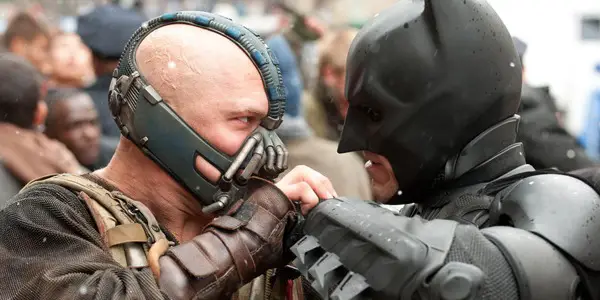
The Dark Knight featured a version of the Joker that was pure evil in a very methodical way. In an interview with The Playlist, Nolan compares his persona to Hannibal Lecter. However, in this third film, he wanted Batman to face off against a much more physically superior enemy in the form of Bane (Tom Hardy). In many ways, he is a darker reflection of Bruce. They both mastered their skills in the League of Shadows, but they went in different paths as far as how they chose to use that power that they acquired. Batman will also face off against another familiar villain, Selina Kyle/Catwoman (Anne Hathaway). The presence of many villains is something that Nolan has done throughout the trilogy because of the nature of expansion. As he states in an interview with Empire, the idea is to make a film that moves on from and continues to develop the world it came from in the previous film.
Since the ending of this reviving trilogy of the Batman franchise, there has always been a lot of talk about the way in which it ends. In an extended interview with Film Comment about his films, Nolan shared his reasons for the open-ended ending to the film. He stated that it was the ending of the Batman story that he wanted to tell it, and it was important for him to show that Batman is a symbol, and as such, that symbol lives on. It is difficult to talk about which film in the trilogy is the best because what we have to appreciate is the revival that this series gave to the Batman character in film. It is a bittersweet ending to the trilogy, but it is also an epic conclusion to Nolan‘s vision of Gotham City’s dark knight. In his interview with Empire mentioned previously, he said that he didn’t envision going beyond Batman Begins. It is interesting to imagine the success of this trilogy if he had the intention of doing one from the start.
Nolan’s Films In The Future
What more can be said about the work that Christopher Nolan has done with his resume so far. The exciting part about that is that he certainly has a bright future ahead of him. It is because of the success of these films that there is excitement and anticipation behind the films that he is said to direct. He brought new life to the Batman franchise with a trilogy that he did not envision doing. He has also made five films with great substance in the noir genre that have solidified his unique style that he brings to these films.
The release of Interstellar is a little over two months away. Stop and think for a moment about the fact that it is the first time that Nolan will explore space in his films. That fact alone is very intriguing, and it raises the anticipation for the release of this film even more – the expectation of greatness is already there. One thing is for sure, you can always expect a tease to give us some idea about what it could be.
Now it’s time to join the discussion. What do you like most about Christopher Nolan’s directing style? How do you rank his films? What actors or actresses do you want to see him work with next?
Please comment and share the guide to continue the discussion on the work of one of films’s most talented directors.
(top image source: indiewire.com)
Does content like this matter to you?
Become a Member and support film journalism. Unlock access to all of Film Inquiry`s great articles. Join a community of like-minded readers who are passionate about cinema - get access to our private members Network, give back to independent filmmakers, and more.
Raul Marin is a contributor for Film Inquiry. He is a teacher by day and a DJ by night, but he's a film fan 24/7! His favorite genre is drama.













